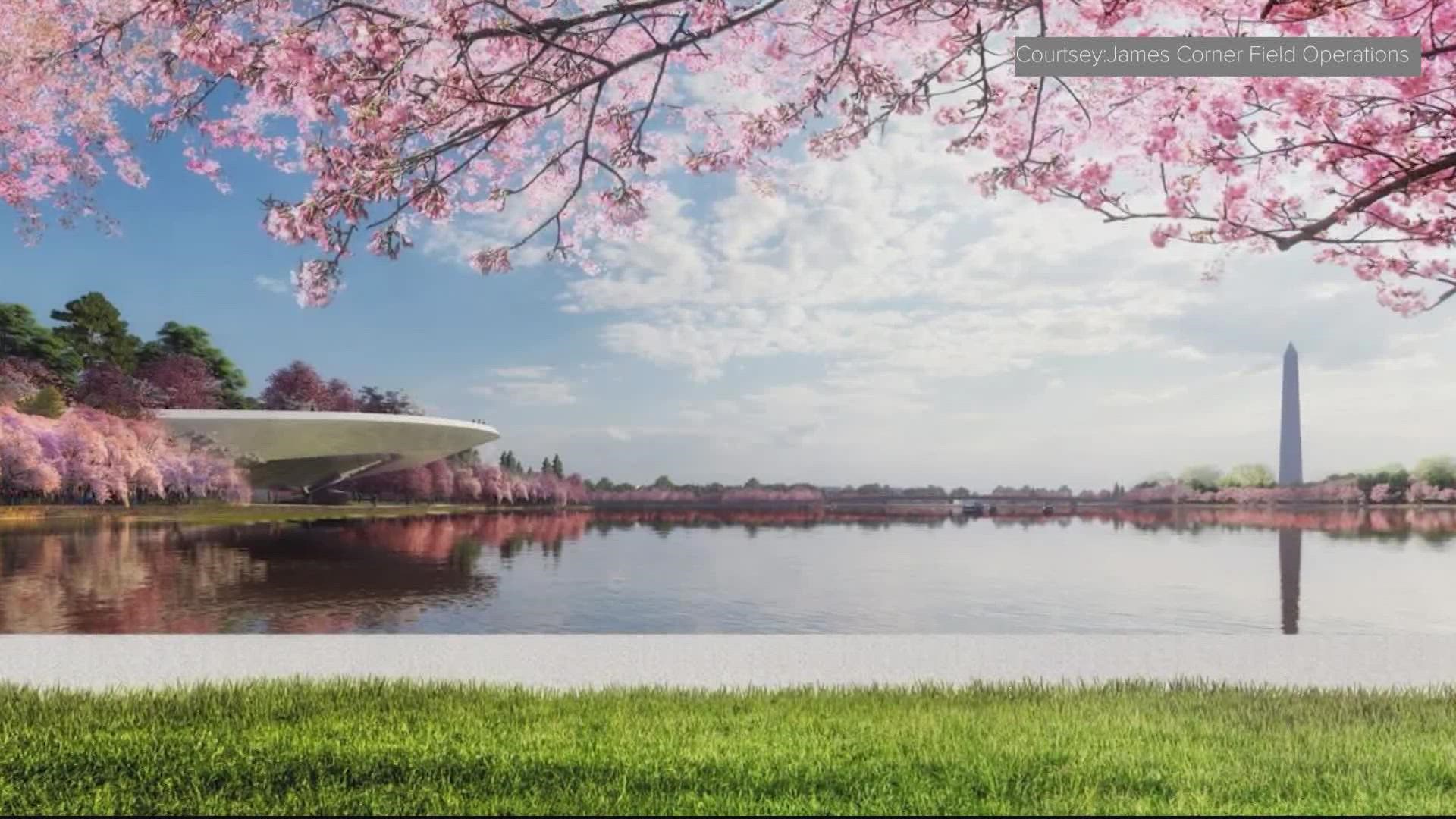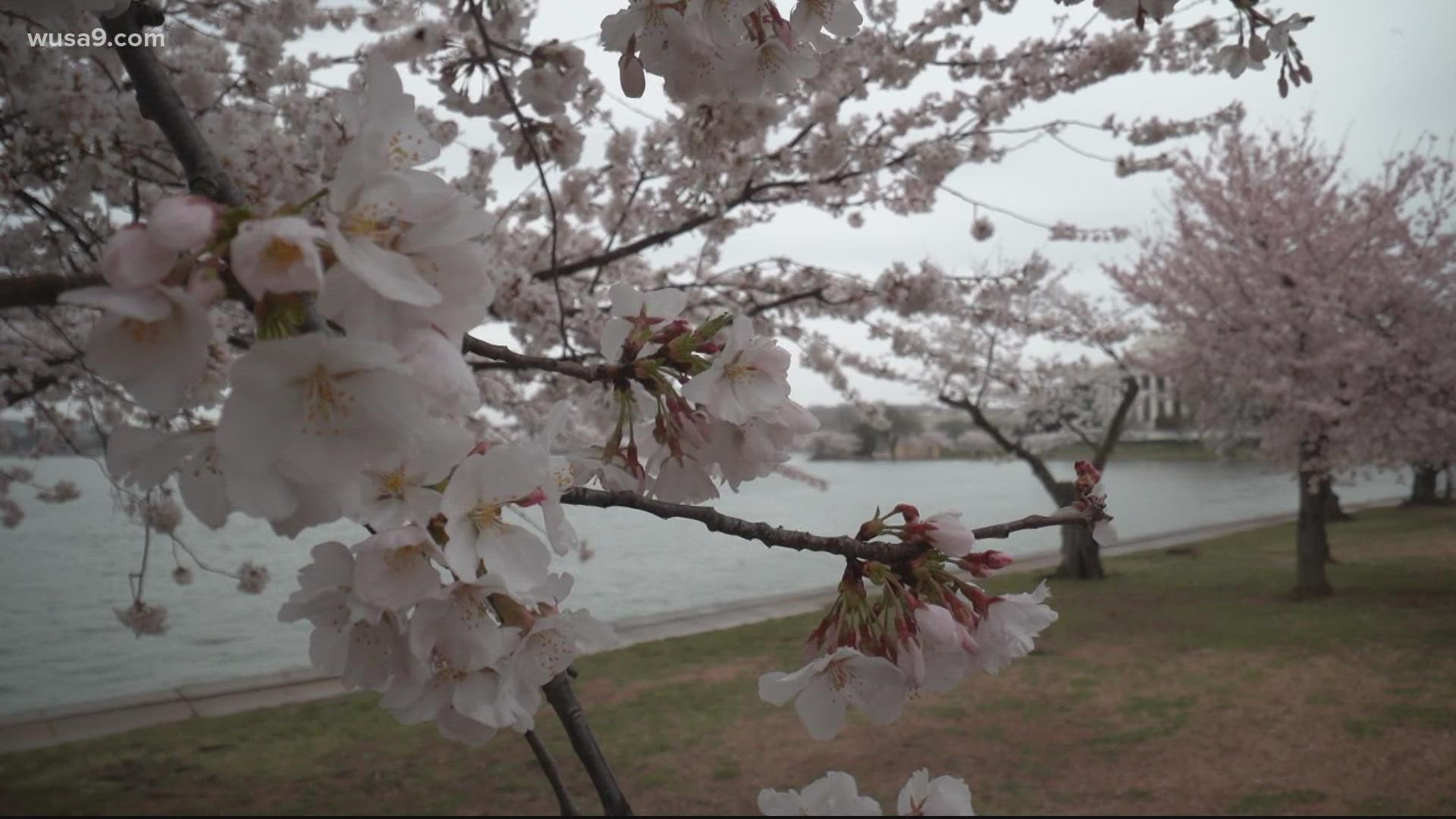WASHINGTON — At high tide every day, the southern portion of the Tidal Basin looks like a neglected beach. Stumps, sticks and other debris litter the landscape. An entire walking path has disappeared under the water.
In 100 years, if nothing is done, the historic Tidal Basin may be underwater. In 500, the Jefferson Memorial will be accessible only by boat. A combination of rising waters and a sinking man-made Tidal Basin puts the entire area – cherry blossoms, memorials, walking paths – at risk.
But it’s not inevitable. The Trust for the National Mall and the National Trust for Historic Preservation have teamed up to create the Tidal Basin Ideas Lab, an initiative to plan out what the Tidal Basin could become in the next century – and you have a say in it.
The Tidal Basin as it stands was a feat of 19th century landscape architecture and engineering. It used to just be a part of the Potomac River, but after the great flood of 1881, city planners got to work dredging up the river and Washington Channel to build the Tidal Basin. The Ideas Lab website explains, “Six years later, engineers installed gates at the entrance and exit of a new pond (now the Tidal Basin) that controlled the flow of water at high and low tides.”
But now, Teresa Durkin, the Executive Vice President for the Trust for the National Mall, said those gates aren’t doing their job.
“The gates have actually silted shut. So the water keeps coming through, but with it, it's bringing all this silt and debris. So over time, it literally cannot open and close anymore. It doesn't function as it was designed to,” Durkin explained. “A lot of that sediment, because it's not flushing out of the out gates, is also settling in the Tidal Basin itself. So it has likely raised the water.”
The infrastructure that worked for almost 150 years just isn’t going to cut it for the next 150. Enter the Tidal Basin Ideas Lab. Five of the top landscape architecture firms in the country were tapped to propose a new, sustainable future for the Tidal Basin. The overarching theme – we must work with nature, not work against it.
“The themes really were, let's work with nature, let's really think about how we can restore the ecology of this site,” Durkin said. “You can't continue to fight nature, it's too powerful of a force. You have to learn to work with it.”
Many of the proposals have through lines – elevated walkways, boardwalks, new vegetation to help soak up floodwaters and constructed wetlands. But some take a more striking approach.
The landscape architects at James Corner Field Operations, for example, option a brand new island chain – or archipelago – in the place of the Tidal Basin. The Franklin D. Roosevelt, Martin Luther King, Jr. and Jefferson Memorials all have their own islands, connected by walking bridges and accessible by boat.

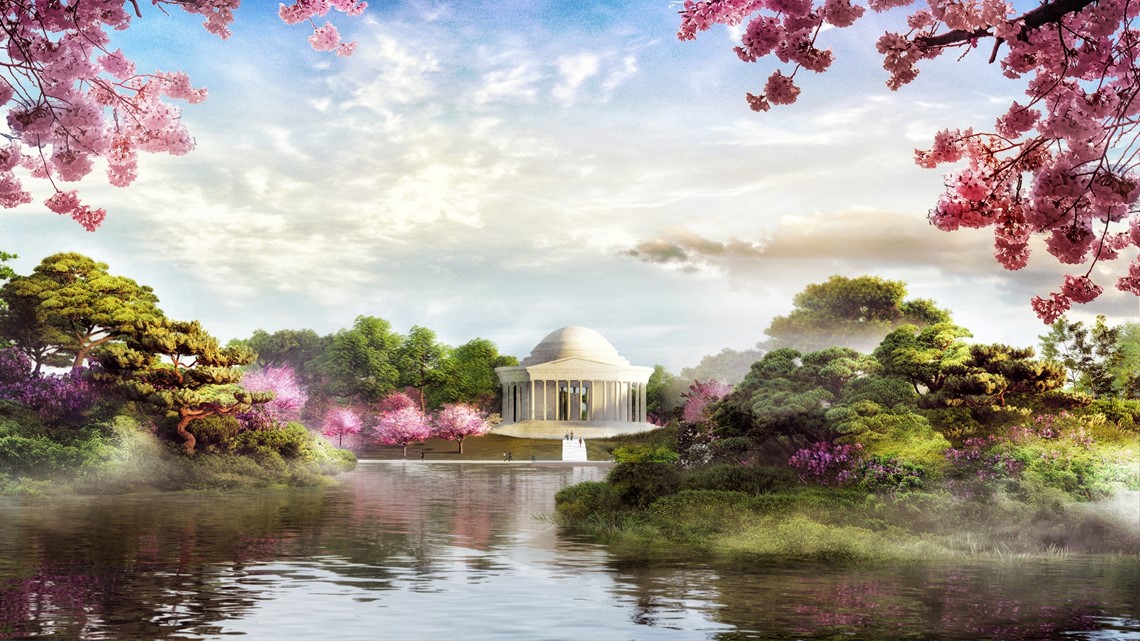
Another proposal of theirs would move the city’s levee from 17th St NW all the way down to where the basin meets the Potomac River.
A third allows nature to take over entirely, planting elevated walkways above a flooded FDR Memorial and bringing visitors face to face with Martin Luther King, Jr.

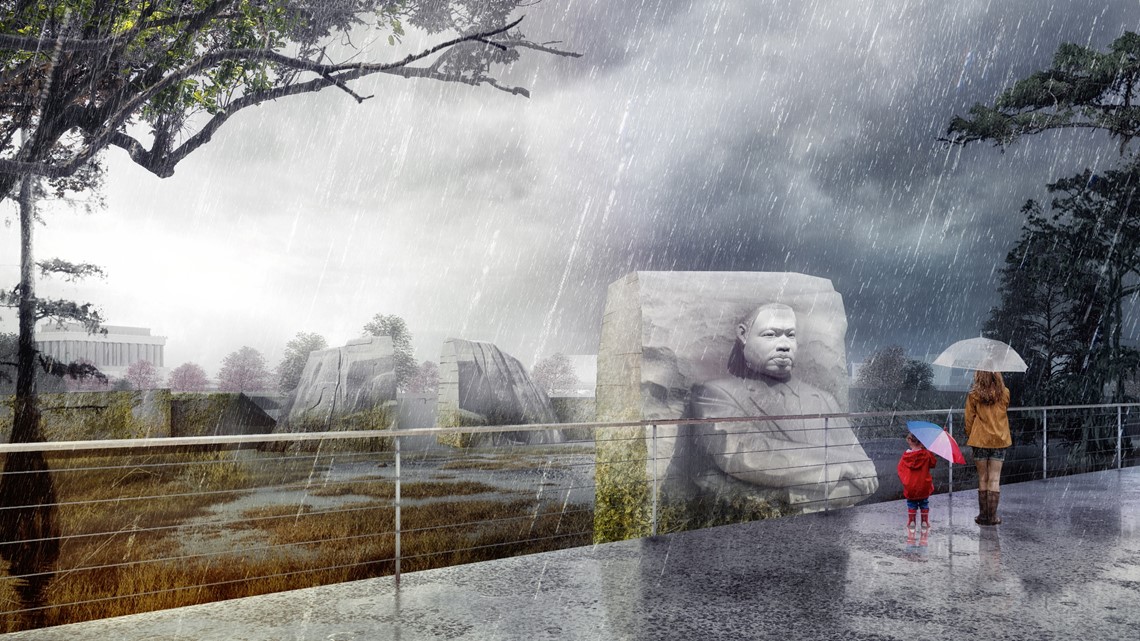
Another firm, GGN, would replace the baseball fields on West Potomac Park with sprawling walking paths, meadows and flood-plane forests to slow flood waters. Their plan has two levels of walking paths, one a boardwalk along the marsh and the others tucked away, guiding visitors away from the edge of the basin during high tides.
Both GGN and DLANDstudio proposed moving around some of the iconic monuments and memorials surrounding the Tidal Basin. Hood Design Studio proposed wetlands and floating walkways.
Reed Hilderbrand presented a plan to relocate the cherry trees further away from the tidal edge and construct winding walking paths around newly built open lawns and shady gathering spaces.

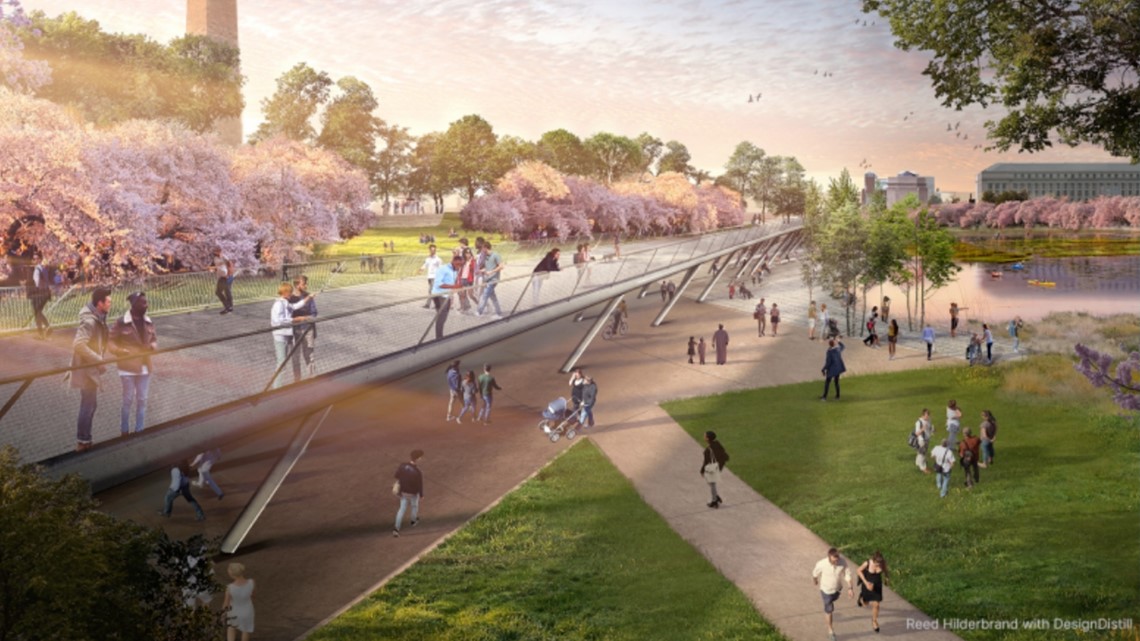
There are a lot of big ideas here, and they're sure to come with a pretty hefty price tag. Since no plan is final, the numbers haven’t been hammered down, but a representative for the Trust for the National Mall told us they’re looking at a number in the hundreds of millions. In the end, any new changes will be funded by donations to the Trusts and federal government appropriations for the National Parks Service over several decades.
The Tidal Basin Ideas Lab is still in their public comment phase. That means they want input from locals and visitors alike.
“This really is a place that belongs to all the people,” Durkin said. “They should have some input in the future of what this place will look like.”
You can see all these proposals in full and fill out surveys on the Tidal Basin Ideas Lab website about your Tidal Basin experiences and what you want a sustainable future for the Tidal Basin to look like for your children and your children’s children.
All visuals courtesy of the Tidal Basin Ideas Lab. American Express presents the National Mall Tidal Basin Ideas Lab, a partnership between the National Trust for Historic Preservation and the Trust for the National Mall.

